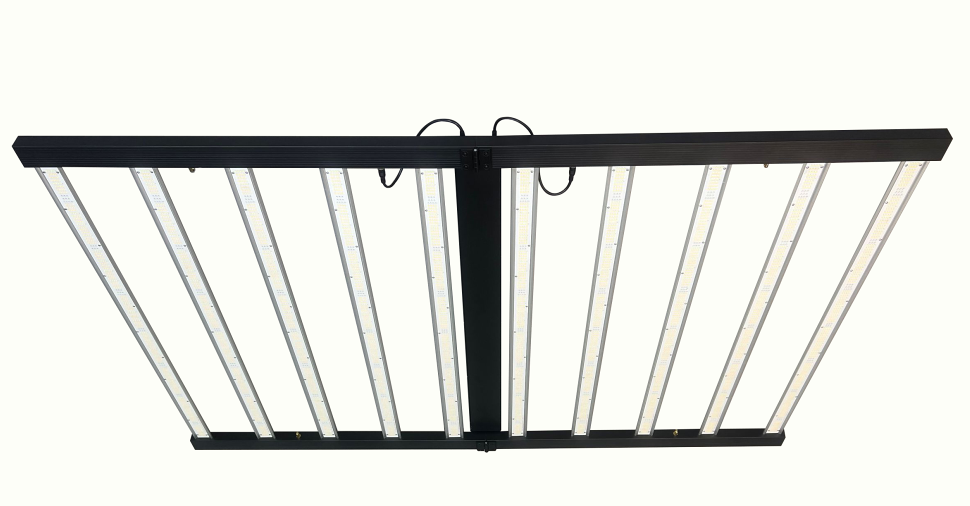While there are many different types of hydroponic lighting, in the hydroponic space, there is a lot of talk about LED grow lights and how they could potentially be the “next big thing” for indoor garden lighting. Like many products in the hydroponic market, there is a lot of marketing and hype behind LEDs.
Sometimes it can be hard to determine if LEDs are the right solution for your garden when you’re struggling through marketing campaigns and rumors from online hydroponic growers. To help with this, I decided to take a deep dive into what’s really going on with LEDs in an unbiased way. Let’s get started by understanding the advantages of LEDs over other lighting technologies!
Advantages of LED Lighting
Let’s step away from hydroponics for a moment and just look at the advantages of LEDs over incandescent and fluorescent lights. Once we understand the general advantages, we can then apply them to hydroponics and see if they still work.
Less Energy
Lasting Longer
Smaller
Solid State (More Durable)
Lower Heat
In addition to these basic advantages, LED lighting also has a high luminous efficiency compared to incandescent and fluorescent lights. Luminous efficiency is the ability of a light source to produce visible light, so the more efficient a light source is, the more visible light it produces per unit of power input.
Something to keep in mind before reading on is that visible light doesn’t always mean better.
Higher Photoelectric Efficiency of LEDs
LEDs can achieve 18-22 lumens per watt, while incandescent bulbs can achieve 15 lumens per watt at 60-100 watts. Fluorescent bulbs achieve 100 lumens per watt. It may seem like fluorescents outperform LEDs, but LEDs have been shown to roughly follow Moore’s Law, meaning their lumens per watt output roughly doubles every 18 months.
LEDs Last Longer
LEDs last longer than either incandescent or fluorescent bulbs. There are reports of LEDs made in the 70s and 80s still working today! This is because they are solid-state, meaning there is no vacuum or gas component. LEDs can last anywhere from 25,000 to 100,000 hours before they fail.
They are Efficient
Another benefit of LEDs is their thermal efficiency. Unlike high pressure sodium bulbs, they do not emit a lot of heat into the growing environment. Because air and water temperature are so important for hydroponic growing, this can be a huge benefit for those who are growing in tight spaces or need to control heat for other reasons. It also allows you to place the light closer to the foliage of your plants, which helps you take advantage of the inverse square law for light.
Controlling Color Temperature

Color spectrum of the average HPS lamp
A huge potential benefit of using LEDs is their ability to be customized for any color temperature for growing. It is well known that plants require different colors of light at different stages of growth. Typically, you will need to purchase two different types of CFLs in order to meet the lighting needs of your plant over its lifetime. If you go the HPS route, you can usually only use it during flowering, as it focuses heavily on the red area of the spectrum, which is used for flowering or fruiting periods.
With LEDs, you could theoretically buy a system that has color filters on individual LEDs for each area of the spectrum that your plant needs. You can then adjust the amount of each color at any time to customize the color spectrum exactly to your plant's exact needs. There are some systems like this that exist, but they are few and far between, and the ones that do exist are quite expensive. If you want to grow your own at all costs, consider looking into this further.
The Only Disadvantage of LEDs for Hydroponics - Cost
Right now, quality LEDs are very expensive compared to other types of hydroponic lighting. We're talking about $400 for a 150-watt system from a reputable supplier, compared to $99 for a 1000-watt HPS and $200 for the ballast. LED prices are expected to drop significantly over the next 2-3 years, so look out for very affordable LED systems in the future.
Is it time to try LEDs in your indoor grows?
They are in effect now, but may not be the best lighting option to take your plants from seed to harvest due to lower yields and higher startup costs. To match the yields you can get with HPS, you would probably have to invest in the same amount of LED panel wattage, which would be at least twice as expensive.
However, it will cost less in the long run when you factor in the lower electricity bills you will incur and the lower costs required to handle the heat put out by HPS.
LEDs have the potential to surpass HPS, metal halide, and CFL lighting solutions in the next few years, but for the hobbyist, the cost of using them for the entire grow cycle is just a bit too high.
If you do want to mess around with them without breaking the bank, here are some ideas:
Use them as supplemental grow lights to provide some extra light output for a lower overhead and cost (not including the purchase cost)
Use them for non-flowering plants (lettuce, basil, most herbs)
Use them for flowering plants, but only for the vegetative phase. Then switch to more powerful lighting
I hope this has been a useful guide for those considering LED lighting. If you have any questions, please leave a comment.
















